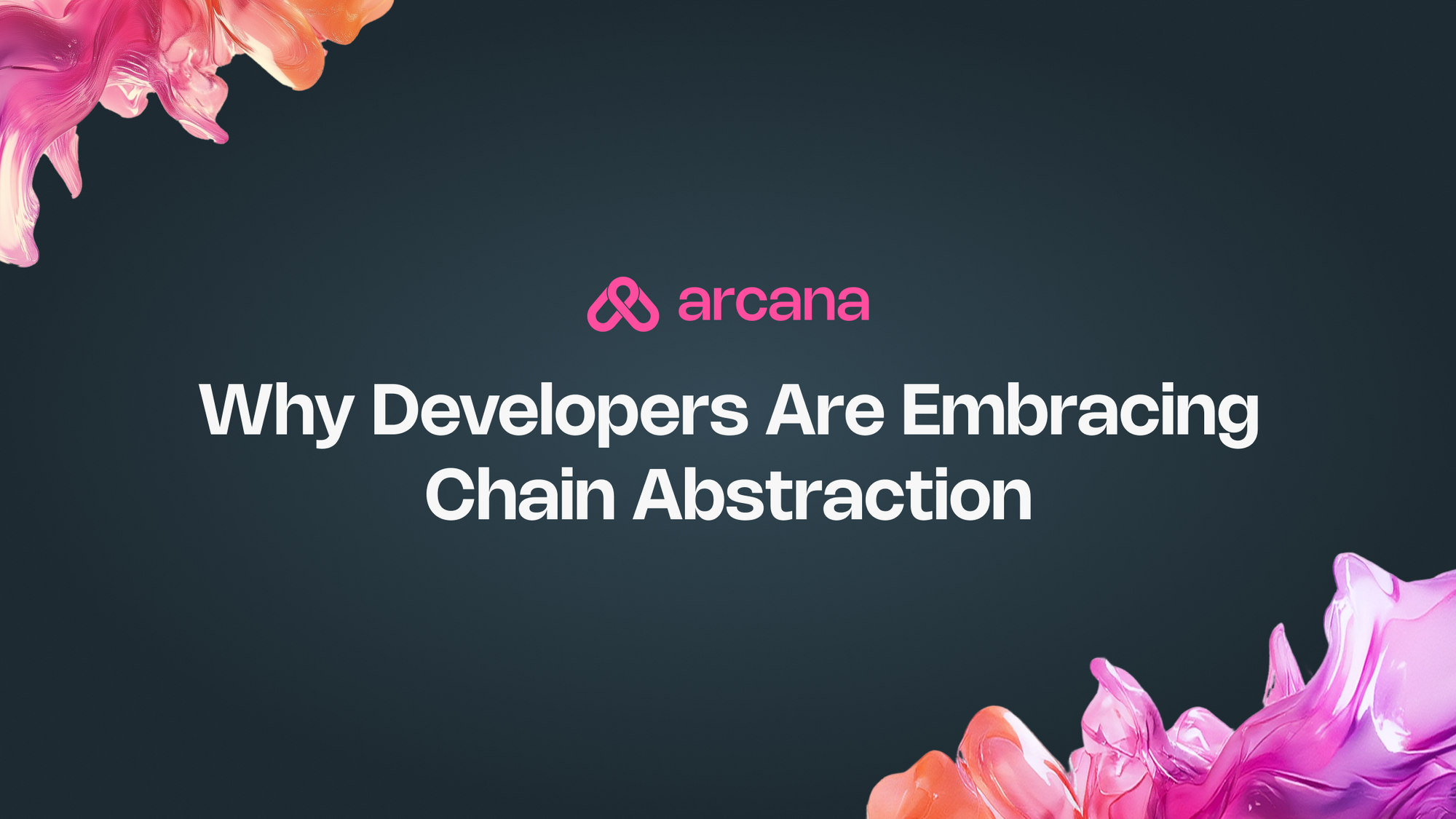Why Developers Are Embracing Chain Abstraction

If you've been building in Web3 for more than a minute, you've likely seen the term "Chain Abstraction" floating around your feed. A year ago, it became the hot new buzzword. While the hype might have cooled, the progress hasn't. If anything, builders are doubling down on adopting chain abstraction in their apps.
Because chain abstraction isn’t just a UX upgrade or some modular meme—it’s a business-critical architecture shift that helps apps ship faster, onboard users with less friction, and scale with fewer engineering headaches.
Let’s break down why developers, founders, and app builders are actively embracing chain abstraction—and why it might just be the most pragmatic decision you make for your app’s future.
1. Faster Go-to-Market Without Compromising UX
Building multichain apps traditionally meant:
- Deploying to multiple chains with custom logic
- Managing RPCs, bridging infrastructure, and asset support
- Implementing custom gas logic and cross-chain flows
This eats into dev time and delays your launch. Chain abstraction platforms flip this on its head. Using an SDK like Arcana’s, devs can let users:
- Spend tokens from any EVM or non-EVM chain
- Skip bridging or switching networks
- Transact without needing native gas
Instead of waiting months to get cross-chain infra right, teams can now go live in weeks, with a better UX out of the box. In an ecosystem where time-to-market can define your success, that’s a real edge.
2. Minimal Code Changes Needed
Abstraction doesn’t require you to rethink your entire architecture.
Many solutions, including Arcana’s, are built to plug into existing dApps with minimal refactoring. This means:
- Your smart contracts don’t need to be rewritten or modified
- You don’t need to manage a custom in-app wallet or bridging UI
- You don’t need to deploy on a new chain
- You can continue supporting your existing chains while opening access to many more
This low-lift integration is why developers are opting to integrate an abstraction layer earlier, so they can offer a unified experience to users from day one.
3. Less Maintenance, More Focus on Product
Multichain maintenance isn’t easy. Keeping up with chain-specific changes, RPC outages, gas spikes, and bridge risks adds significant operational overhead.
With chain abstraction, much of this complexity is abstracted away:
- Unified balances reduce the need to support chain-specific UI logic
- Gas abstraction reduces failed txs and support queries
- Routing logic is handled by solvers, not your backend
This frees your team to ship product features instead of dealing with infra complications. Especially for lean teams or solo builders, this can be the difference between surviving and scaling.
4. No More Fragmented Liquidity or UX
Here’s the dirty little secret of multichain apps: fragmentation kills retention.
Users hold assets on random chains. They don’t want to bridge. They definitely don’t want to top up gas. And yet, most apps still force them to.
With chain abstraction, developers can:
- Show users a unified balance from all supported chains
- Let them spend wherever, without needing to hold gas or needing to bridge
- Keep them in-app with fewer points of friction (e.g., spend the entire balance in one go)
This leads to higher engagement, smoother onboarding, and better metrics across the board. It’s not just about delighting users, it’s about keeping them.
Check out how that works in action.
5. Built for the Modular, Appchain Future
More chains are launching every month—many of them purpose-built (e.g., Validiums, Rollups-as-a-Service, Appchains). Supporting every new chain manually isn’t scalable.
Chain abstraction offers a future-proof approach:
- You don’t need to redeploy or rewrite for every new chain
- You can support assets and users from new networks without building support for that chain
- You can optimize routing, execution, and fees dynamically as the ecosystem evolves
In other words, you build once and let the abstraction layer adapt to the underlying infrastructure changes.
Final Thoughts
Chain abstraction is more present than ever—just not always by name. It's quietly becoming the standard approach for teams who care about scalable architecture, cross-chain UX, and developer efficiency.
As blockchain ecosystems continue to fragment and expand, abstraction offers a clear path forward: Build faster. Maintain less. Onboard more. Scale confidently.
Today’s users don’t care about chains—they expect things to just work. So, whether you’re building a DeFi protocol, NFT platform, game, or DEX aggregator, the real question is:
Do you want to build multichain the hard way, or the smart way?
Arcana's Chain Abstraction offers users a Unified Balance of their USDC, USDT, and ETH across multiple chains, allowing them to spend their entire balance on any chain instantly, without bridging. Available through Arcana Wallet, and SDK for developers to enable Chain Abstraction in their apps.
Start building with Arcana: docs.arcana.network

